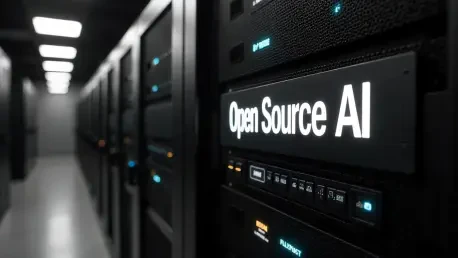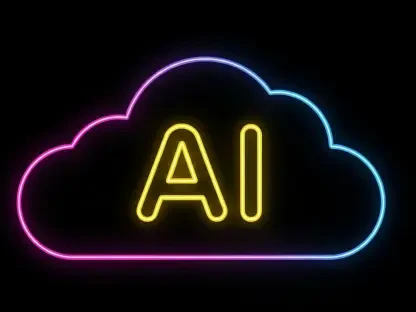Anand Naidu is known for his deep expertise in both frontend and backend development, bringing valuable insights into diverse coding languages. An advocate for open-source technology, Anand is poised to share his thoughts on the burgeoning impact of open-source AI, driven by initiatives from the Linux Foundation and Meta.
What role do the Linux Foundation and Meta play in the development and promotion of open-source AI?
The Linux Foundation and Meta are pivotal in promoting open-source AI by providing structure, support, and a global platform for collaboration. Meta’s decision to open-source their deep learning framework, PyTorch, under an open governance model has significantly influenced the landscape. Their efforts are helping drive innovation and adoption by creating an accessible, affordable AI ecosystem.
Can you elaborate on the current adoption rate of AI tools among organizations, and how many of these are using open-source AI?
Remarkably, 94% of organizations have already embraced AI tools, demonstrating widespread incorporation across industries. Notably, 89% of these organizations are utilizing open-source AI technologies in some capacity. The high adoption rate reflects the broad appeal of open-source solutions, reducing costs, and enabling flexibility.
What are the main financial benefits of using open-source AI compared to proprietary AI solutions?
Open-source AI offers considerable cost advantages, as it’s significantly cheaper to implement than proprietary solutions. An aspect many businesses find appealing is the potential to avoid the high licensing fees associated with proprietary software. In fact, companies report that open-source AI could be up to 3.5 times more cost-effective.
According to the report, how would the absence of open-source AI affect company expenditures?
Without open-source AI, companies would face skyrocketing expenses—quite possibly spending 3.5 times more than they currently do with open-source solutions. This potential increase underlines the financial importance of open-source in enabling organizations to manage budgets effectively while accessing cutting-edge technology.
How does open-source AI enable smaller companies and startups to compete with larger corporations?
Open-source AI levels the playing field by offering tools that smaller companies and startups can use without prohibitive costs. These tools foster innovation by giving smaller players the resources to experiment and develop new products and services, much like larger corporations with extensive resources.
Can you explain the impact of Meta’s decision to shift PyTorch to an open governance model?
The move to an open governance model for PyTorch was transformative. It encouraged broader participation and contributions from external companies, such as chip manufacturers, while maintaining developer engagement. This shift diversified control, promoting a more collaborative environment that enhances the overall quality and innovation within the PyTorch ecosystem.
How did contributions to PyTorch change once it moved to an open governance structure?
After adopting an open governance model, PyTorch saw a marked decline in contributions from Meta itself, but this opened avenues for increased collaboration from other companies. Such external input from diverse sources enriches the framework, providing a more balanced development process and accelerating innovation for everyone involved.
According to the report, how does open-source AI promote innovation in comparison to traditional patent methods?
Open-source AI, as opposed to traditional patent methods, fosters innovation through its inclusivity and collaborative nature. This approach allows developers to engage in open activities, encouraging idea sharing rather than restricting innovation behind patents. The report highlights that collaborative engagement is a more effective driver of innovation than conventional patent strategies.
In what ways is open-source AI transforming the manufacturing sector?
Open-source AI is revolutionizing the manufacturing sector by offering adaptable code that can be customized for specific workflows. This flexibility streamlines processes and boosts efficiency, expected to inject substantial economic value—up to $290 billion—into advanced manufacturing through improved automation and management systems.
How is open-source AI beneficial in the healthcare industry, and what potential value increase is expected?
In healthcare, open-source AI is crucial for developing cost-effective, tailored tools that enhance diagnostics and disease tracking. Its flexibility in creating secure and efficient solutions can significantly reduce expenses. Experts forecast a potential $260 billion increase in global healthcare value, showing that open-source AI is not only competitive with but can surpass proprietary alternatives in certain areas.
What are the implications of AI-related skills on wages and career opportunities mentioned in the report?
The surge in AI-related skills is poised to elevate wages and expand career opportunities, with potential wage increases of up to 20%. As demand grows across various sectors, those equipped with AI expertise will likely see enhanced employment prospects and earning potential, highlighting the importance of AI-focused training programs.
How does Hilary Carter, the SVP of Research at the Linux Foundation, describe the broader economic impact of open-source AI?
Hilary Carter considers open-source AI a key catalyst for economic growth, as it promotes cost-effectiveness and boosts productivity. Her insights emphasize how open-source initatives not only cut costs for businesses but also enhance skillsets that drive higher wages and greater economic opportunity.
What future role does open-source AI play in driving growth and competition according to the report?
Open-source AI is set to be the cornerstone of future growth and competition. By making advanced AI tools widely accessible, it fosters innovation across sectors, enabling businesses to operate more efficiently. This democratization of technology ensures robust economic development and maintains competitive markets without overwhelming expenses.
Which upcoming events or expos focus on highlighting AI and big data advancements as mentioned in the content?
The AI & Big Data Expo—occurring in Amsterdam, California, and London—stands out as a significant event bringing together industry leaders to explore AI and big data advancements. Taking place alongside the Intelligent Automation Conference and Digital Transformation Week, these events offer valuable insights for those looking to delve deeper into the evolving landscape of AI technology.
How can interested individuals or organizations learn more about the trends in AI and big data from industry experts?
To gain insights from industry leaders, individuals or organizations should consider attending events such as the AI & Big Data Expo or other technology-focused gatherings powered by TechForge. These platforms offer unparalleled access to expert knowledge, emerging trends, and networking opportunities within AI and big data sectors.
Do you have any advice for our readers?
Certainly! My advice is to stay curious and keep learning. The technological landscape is evolving incredibly fast, especially with AI and open-source developments. Engaging with open-source communities and attending industry events can provide valuable insights and networking opportunities. Don’t hesitate to experiment, as hands-on experience is one of the best ways to understand new technologies and drive innovation in your field.









